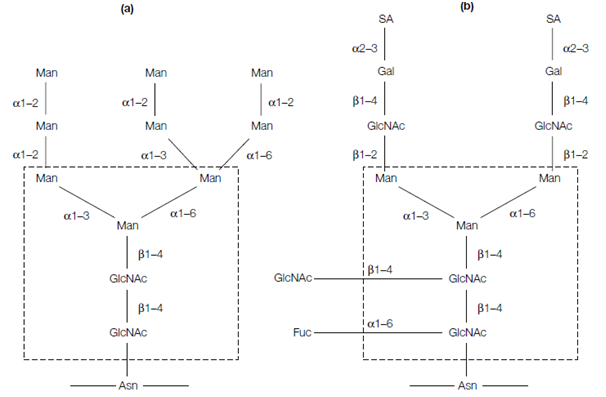Oligosaccharides:
Oligosaccharides are short chains of monosaccharides linked together through glycosidic bonds. In case of oligosaccharides connected to proteins (glycoproteins) or lipids (glycolipids) oligosaccharide is not a repeating unit but consists of a range of variant monosaccharides joined through a variety of kind of bonds. In glycoproteins, two major kinds of oligosaccharide linkages exist:
- An O-linked oligosaccharides attached to the protein through O-glycosidic bonds, to the OH groups of serine or threonine side-chains.
- An N-linked oligosaccharides attached to the protein through N-glycosidic bonds to the NH2 collections of asparagine side-chains. All N-linked oligosaccharides have a general pentasaccharide core of two GlcNAc and three Man residues but the nature of the side-chains differs shown in the figure. In the high mannose type of N-linked oligosaccharide, classically two to six additional Man residues are joined to the pentasaccharide coe. The difficult kind of N-linked oligosaccharide hold two to five outer branches attached to the Man of the polysaccharide core; these branches contain different combinations of sialic GlcNAc, Gal, acid N-acetylneuraminic acid, L-fucose and mannose .

Figure: Examples of (a) high mannose type and (b) complex type oligosaccharides. In each case, the sugars that comprise the common pentasaccharide core are boxed. SA, sialic acid.